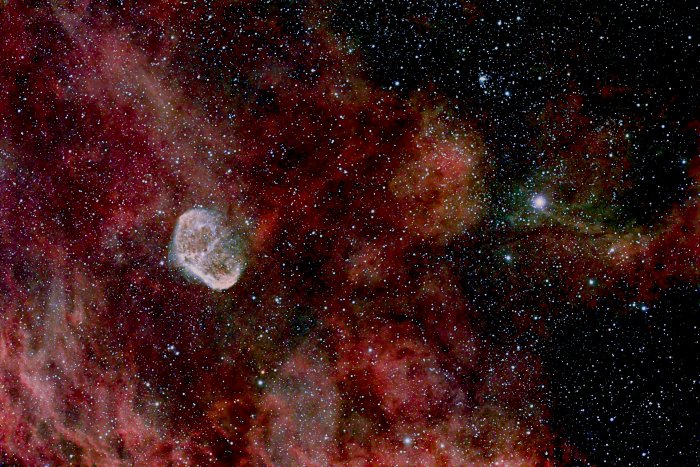
The Crescent Nebula NGC 6888 is an emission nebula in the constellation Cygnus, about 5000 light-years away from Earth. It was discovered by William Herschel in 1792. It is formed by the fast stellar wind from the Wolf-Rayet star WR 136 (HD 192163) colliding with and energizing the slower moving wind ejected by the star when it became a red giant around 250,000 to 400,000 years ago.
he
Elephant Trunk Nebula IC 1386 is a concentration of interstellar gas and dust within the much larger ionized gas region in the constellation Cepheus about 2,400 light years away. The bright rim is the surface of the dense cloud that is being illuminated and ionized by a very bright, massive star (HD 206267) that is just above the Trunk in this image.
A total of 6.67 hours exposure.
| Exposure | 20@1200 sec |
| ISO | 3200 |
| Camera | Nikon Z7 [8856 x 5504] |
| Optics | Skywatcher Esprit 120mm Refractor |
| Filter | Radian Triad Ultra Quad-Band Narrowband Filter |
| Guiding | Phd2 using a ZWO 224MC on an Orion 60x240mm Guide scope |
| Controller | Images taken using Kstars on an Odroid-N2 (Raspberry Pi clone) |
| Field of View | 2.08 x 1.37 deg |
| Location | Lower Sackville, Nova Scotia. |
| Date | 2022-07 - 2022-08-06 |
| PixInsight Processing | | WeightedBatchPreprocessing Script | | HistogramTransform | | CurvesTransformation |
|
| Further tweaking (or destruction) for colour in Lightroom |

